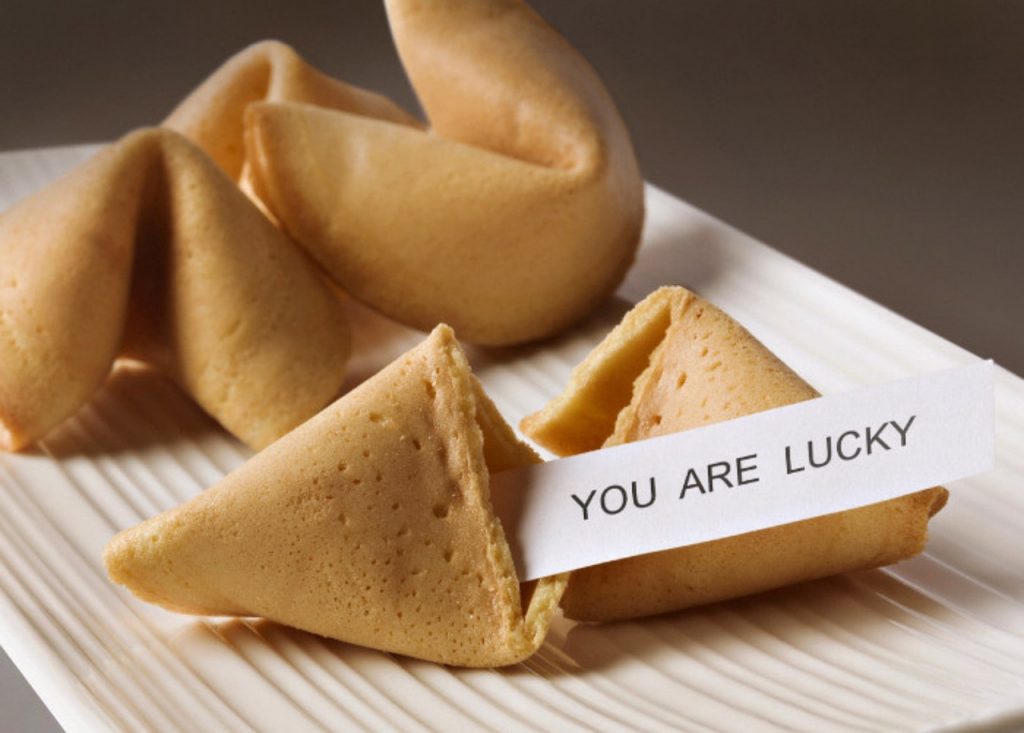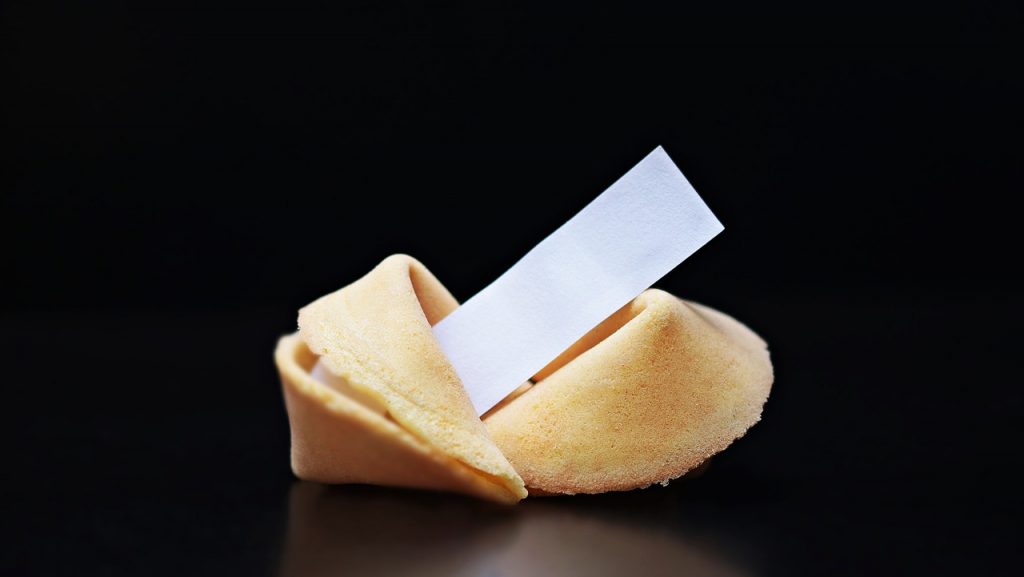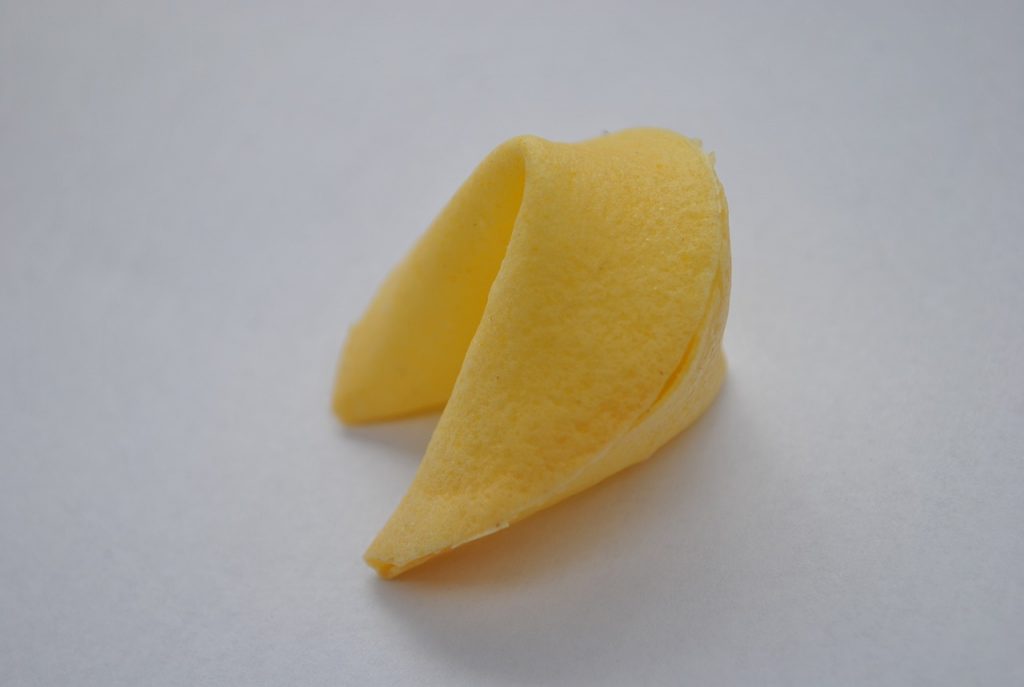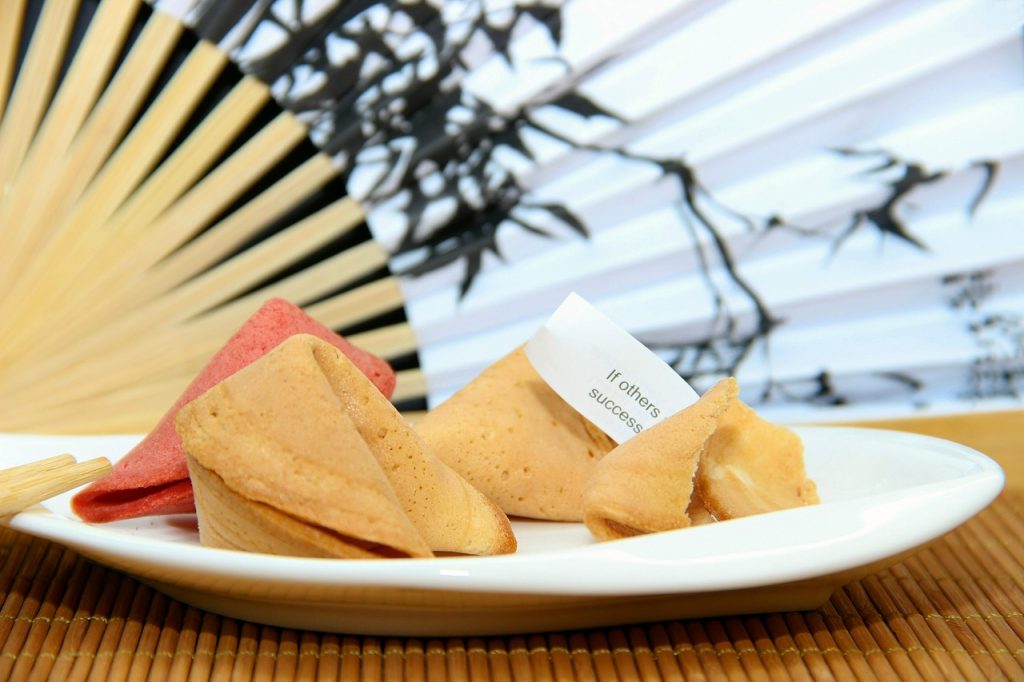Who Makes The Most Fortune Cookies?
Discover the history of fortune cookies and who makes most of them today.
This article is more than 2 years old

Fortune cookies are delicious little novelties that many a person looks forward to unwrapping as they devour their delicious morsels of sesame chicken and pork fried rice. There is something exciting about breaking in half the little folded cookie to reveal the wisdom printed on the tiny little sheet of white paper. Perhaps you’ll recall feeling giddy after reading that “Your planning will bring rich rewards” or “A big fortune will descend upon your this year.” Fortune cookies are both conversation starters as well as yummy little treats and are a popular staple at Chinese American restaurants across the United States. However, contrary to popular belief, these crunchy cookies don’t have any roots in China at all. In fact, you might be surprised to find out the real origins of where fortune cookies got their start and even more astonished to discover who produces the majority of these tiny pieces of golden goodness.
History

The actual origin of the fortune cookie is somewhat hazy, as there are conflicting accounts as to just how these cookies came to be. According to History.com, the first fortune cookies were likely made and sold at confectionary shops outside Kyoto, Japan beginning in the 1870s. Jennifer Lee, the author of the book Fortune Cookie Chronicles: Adventures in the World of Chinese Food, said that these first cookies were likely called “tsujiura senbei,” which translates to “fortune cracker.” However, the fortune crackers were quite different from the ones we widely consume today. Lee described them as larger and darker and explained that these first iterations were more savory than sweet because they were made out of sesame and miso.
In her book, Lee went on to detail that fortune crackers likely found their way to the United States sometime between the late 1880s and the early 1900s, as this was when many people were migrating from Japan to the United States, particularly California. It was then that many Japanese bakers set up shop and began to sell their confections in cities like San Francisco and Los Angeles. The actual shop that first made the cookies as they are today is up for debate, though. Some sources point to the first modern fortune cookies being served at the Tea Garden in San Francisco’s Golden Gate Park, who claimed to have gotten the cookies from a local Japanese Bakery called Benkyodo. Others insist that the first modern fortune cookies were created in Los Angeles by either Fugetsu-Do confectionary, the snack manufacturer Umeya or the Hong Kong Noodle Company.
Despite questions surrounding their exact location of inception, it is clear that these cookies were created in California by Japanese Americans. So, the question then becomes, how did they come to be a staple at Chinese American Restaurants? That shift happened during World War II when the Japanese were forced into Internment camps, as a result, Japanese American-owned businesses closed and Chinese Americans took up the fortune cookie mantle and began to serve the yummy treat at their restaurants.
Where & How Fortune Cookies Are Produced Today

As you may have guessed fortune cookies are no longer freshly baked, they are instead mass-produced and sold in bulk to Chinese restaurants across the nation. One manufacturer reigns king in terms of how many fortune cookies they produce in a year, but other companies do produce them as well.
The number of fortune cookies produced worldwide each year tops out at close to 3 billion, most of which is distributed in the United States. The leading manufacture of fortune cookies is actually a Brooklyn, New York-based corporation called Wonton Food, Inc., whose daily output totals nearly 4.5 million fortune cookies. Interestingly enough, New York is also home to the Kari-Out Company that produces much of the packaging utilized in Chinese restaurants, they are located slightly north of Brooklyn in White Plains, NY. If you happen to notice your fortune came from Wonton Food Inc., visit secondfortune.com to find out what else the future has in store for you.
Other key producers include Baily International out of the Midwest and Peking Noodle in Los Angeles. In recent years various local producers have also popped up in markets across the United States including in Seattle, Minneapolis, Philadelphia, and San Francisco.
Each producer of fortune cookies largely follows the same general procedure to make the little snacks. The cookie’s ingredients, which are largely made up of flour, sugar, and vanilla, are mixed together in large batches, moved onto trays that are heated, and then compressed further with hot plates, once cooked the fortunes are inserted and the cookies are shaped either by machine or hand, wrapped in plastic and then from there make their way out for delivery.
The Conclusion

Fortune Cookies, although having somewhat of a sorted past, are a well-loved treat that have remained an important staple in popular food culture for over a century. They are as fun as they are delicious, which makes for a recipe that generations to come are sure to continue to enjoy. So, what are you waiting for? Call up your favorite Chinese restaurant, order your favorite meal, and indulge in the crunchy goodness of a fortune cookie.




